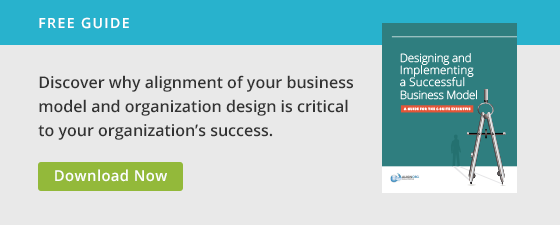In a world of fast-paced market changes, increasing automation, and rising digital transformation, it feels like small start-ups have increasing power to disrupt markets and perhaps even compete with much bigger companies because of their focus, nimbleness, and lack of legacy systems and capabilities. But, is that really true? Has the pendulum swung in favor of small start-ups or is that more of a perception than a reality?
The answer comes down to speed. The reality facing companies today is that many large change transformations simply take too long to develop and implement. The result is diminished benefits even if the design was right for the market. Innovation and market differentiation have a window to be effective. If your company can’t move fast enough, you will miss the window or someone else will beat you there. To benefit fully from the market impacts of organization redesign, capability realignment, or marketplace differentiation, you must move fast.
We often assume that start-ups have the edge on speed: there are less employees, less distractions (resulting in a more focused, singular direction usually due to resource constraints), and a culture of change, innovation, speed, and excitement. But do these things always translate to greater change transformation speed or are there other areas where more established businesses still hold a speed advantage?
The following outlines four factors to strategy implementation and change transformation speed and how start-ups and big companies stack up:
Decision Making. In a constantly changing market, how quickly you can make a decision will drastically impact your speed to implementation. Customer’s demands shift, and a company must make timely decisions to pivot and redirect their organization’s strategy and resources to stay relevant and profitable.
Start-ups seem to have the edge here. Because they are small and since consensus-building takes time, they can move forward with decisions quickly and decisively. By comparison, steering a larger organization towards strategic change can be more difficult and involves more people. Decisions take time when there are many stakeholders to involve, approvals to obtain, and internal agendas to navigate. This added complexity slows the decision-making process down.
Development. While start-ups have the advantage for quick decision making, bigger businesses have more resources to develop products and services once the company has settled on an idea. If you think about an IT start-up with four employees vs a company with 400, the start-up will inevitably need to find outside resources to actually do the development work and provide the expertise needed to fully develop a service/product. The time saved by having the resources and expertise in house for development is significant and gives bigger businesses the edge. [Of course, if it takes a long time to decide what the focus and priorities should be (back to decision making above), then this advantage may be lost.]
Test and Learn. Test and learn practices are finding more traction in companies of every size, allowing businesses to test their products with a small number of customers and adjust them before fully releasing them to customers. Larger companies arguably have more loyal customers that would readily test new products as well as more resources to make quick adjustments to offerings after customer feedback. However, start-ups have less to lose and less expectations to live up to than more established companies. Their ability to disrupt the market in this way still gives them an advantage. For test and learn, it looks like a tie.
Scale up. While start-ups have the edge in implementing a new design or direction, more established businesses can garner greater marketing penetration and leverage after initial strategy implementation. Much like a feather-weight boxer, the small size of start-ups makes them quick to pivot, implement, and get to the space first. They are often the first to hit, but their punch may not always have a large impact on the market (in terms of coverage, penetration, or exposure).
Big businesses may be slower, but like a heavy-weight boxer they pack a big market punch once they square up and take a shot with their added resources, established customer base, and brand recognition. Their reach is long and the market will inevitably feel their force. For scale-up, we again have to call it a tie.
So, has the market swung towards a start-up advantage? The answer is probably not, but the race is much closer than ever before. As the market continues to favor businesses who can swiftly change and pivot with customers, larger businesses will need to pick up the pace on decision making to stay in the game. This means mitigating the slower areas of their strategy implementations and change transformations and adopting new time-saving practices. Start-ups will need to find ways to mitigate the depth and resources of large companies so they can punch above their weight.






